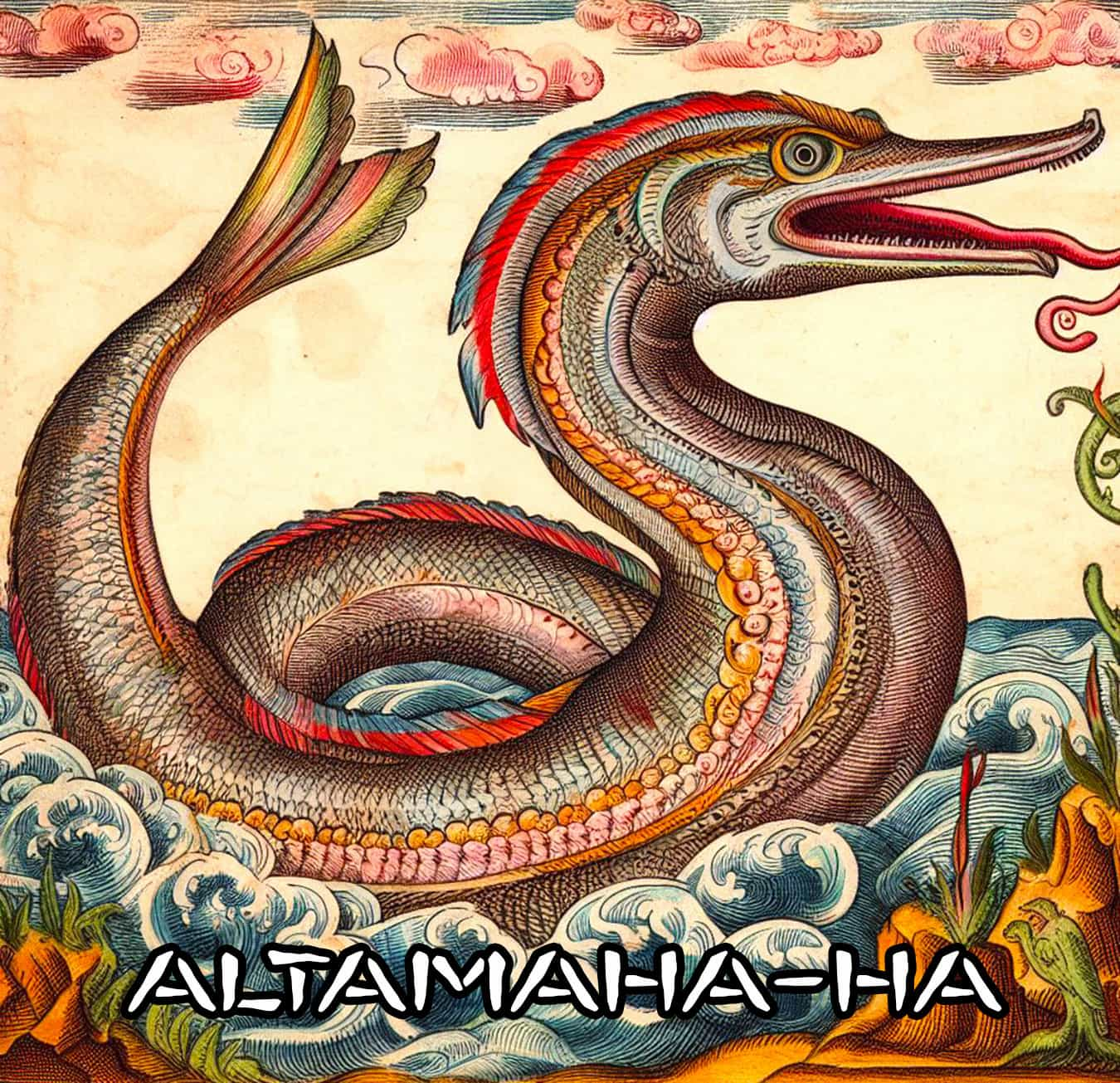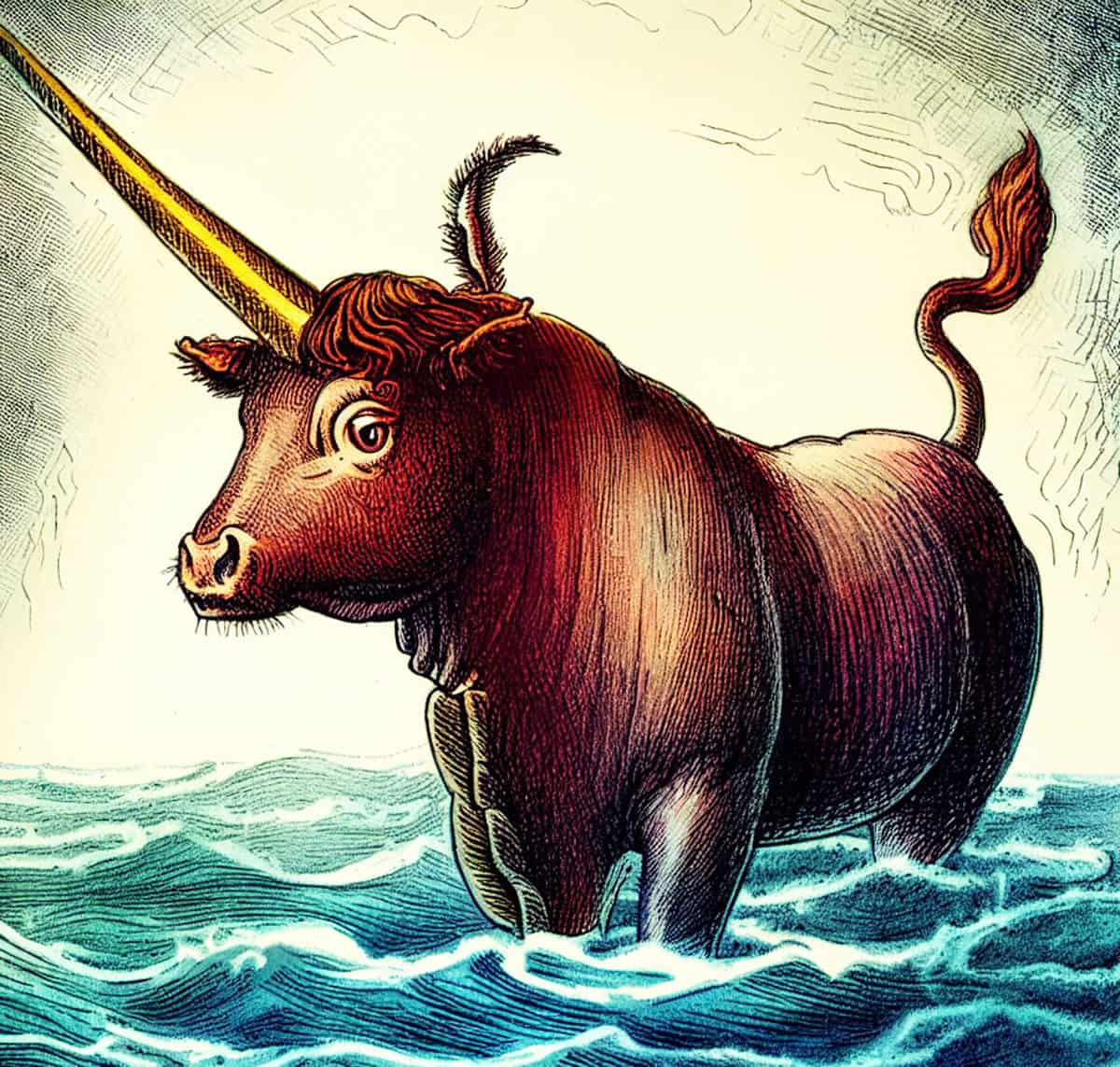The grand era of the Age of Exploration is a topic that many history enthusiasts love to talk about. In this era, one cannot ignore the illustrations of mythical creatures and mysterious beasts that were recorded in the navigational and geographical charts of that time. The cartographers of that era often painstakingly drew all sorts of monsters and creatures with mythological elements, such as headless men, dog-human hybrids, lizard-like monsters, humanoid apes, sea monsters, and so on, filling the corners of the maps with these strange images. These animals, both marine and terrestrial, soon became popular elements of maps and atlases.
The Origin of the Cartographic Monsters

Modern people find these monsters preserved in the oldest map books fascinating and feel that they were mere embellishments added by the artists and cartographers to break the monotony of the terrain and coastline. It is assumed that these creatures were included in the charts for no other reason than to spice things up and give the cartographers a bit of a break. While it’s true that cartographers included creatures on their maps for the sake of entertainment, they also drew them after receiving “actual” input from adventurers who ventured into these regions.
The monsters they drew were actually based on first-hand accounts they heard from the explorers. When European sailors first arrived in uncharted waters and set foot on untraveled shores, they were often terrified by the sight of strange creatures they had never seen before. This was true both during the Age of Exploration and previous nautical operations in Europe.
When they returned home, they would spread their observations, and the cartographers would draw these monsters based on the descriptions of the explorers, trying to make the appearance of these monsters as “realistic” as possible. Some of the cartographers were even explorers themselves. In other words, the monsters they drew were not imaginary, but actually “realistic records,” and there were many such records in the Age of Discovery.
For example, when exploring the “Dabeiba” region of the native Americans called Antioquians, the magical animals and mythical stories passed down by the natives gave Spanish cartographers classic monster images such as vampire bats, harpies, and swamp dragons.
Dabeiba Temple With Full of Golds

In the late 15th and early 16th centuries, Spanish explorers began to explore the Central American region. They first heard about “Dabeiba” from the native people who lived near where Panama is today in Central America. The exact location of this area is now unknown.
According to the indigenous people of Antioquians, “Dabeiba” was the name of a goddess in ancient times. She was once a princess of a powerful country, ruled over the area of Dabeiba, and had unique magical powers and great wisdom. The locals admired her greatly, and after her death, they worshipped her as a deity and built a magnificent temple to honor her. People from nearby and even faraway places came to this temple to pay their respects.
To show their respect for the goddess, every indigenous person who came to pilgrimage would bring their own precious treasures to offer to her. Even distant tribal leaders would come to pay homage every year and decorate the Dabeiba Temple with large amounts of gold treasures, and over time, Dabeiba accumulated a large amount of wealth. Moreover, there were many gold mines in this area as well. The rivers were full of gold sand; one could easily find a handful of them.
The Spanish Colonizers

After hearing the story of Dabeiba from the indigenous population, Spanish explorers came to Central America one after another to search for this place. For example, Spanish explorer and conquistador Vasco Núñez de Balboa (1475–1519), who was famous for “discovering” the Pacific from the New World, had also explored Dabeiba. But the local environment was harsh and filled with damp swamps.
Local people like the Antioquians were brave, quick, and very good at fighting on land and water. They were also very hostile to outsiders, which made it impossible for Spanish explorers to find what they were looking for. Only Balboa once attacked an empty indigenous village (the residents had all hidden), and he found jewelry worth 7,000 Castilian gold coins in this village, proving that the rumor of gold treasures in Dabeiba was not false.
Except for Balboa’s one big win, none of the Spanish sailors’ efforts were successful, though. Along with the story of Dabeiba’s gold treasure, people also knew about the mysterious events and monster rumors that happened in the area. Several exploration teams disappeared completely in the Dabeiba area, and hundreds of Spanish explorers went missing, never to be seen again.
Swamp Dragons
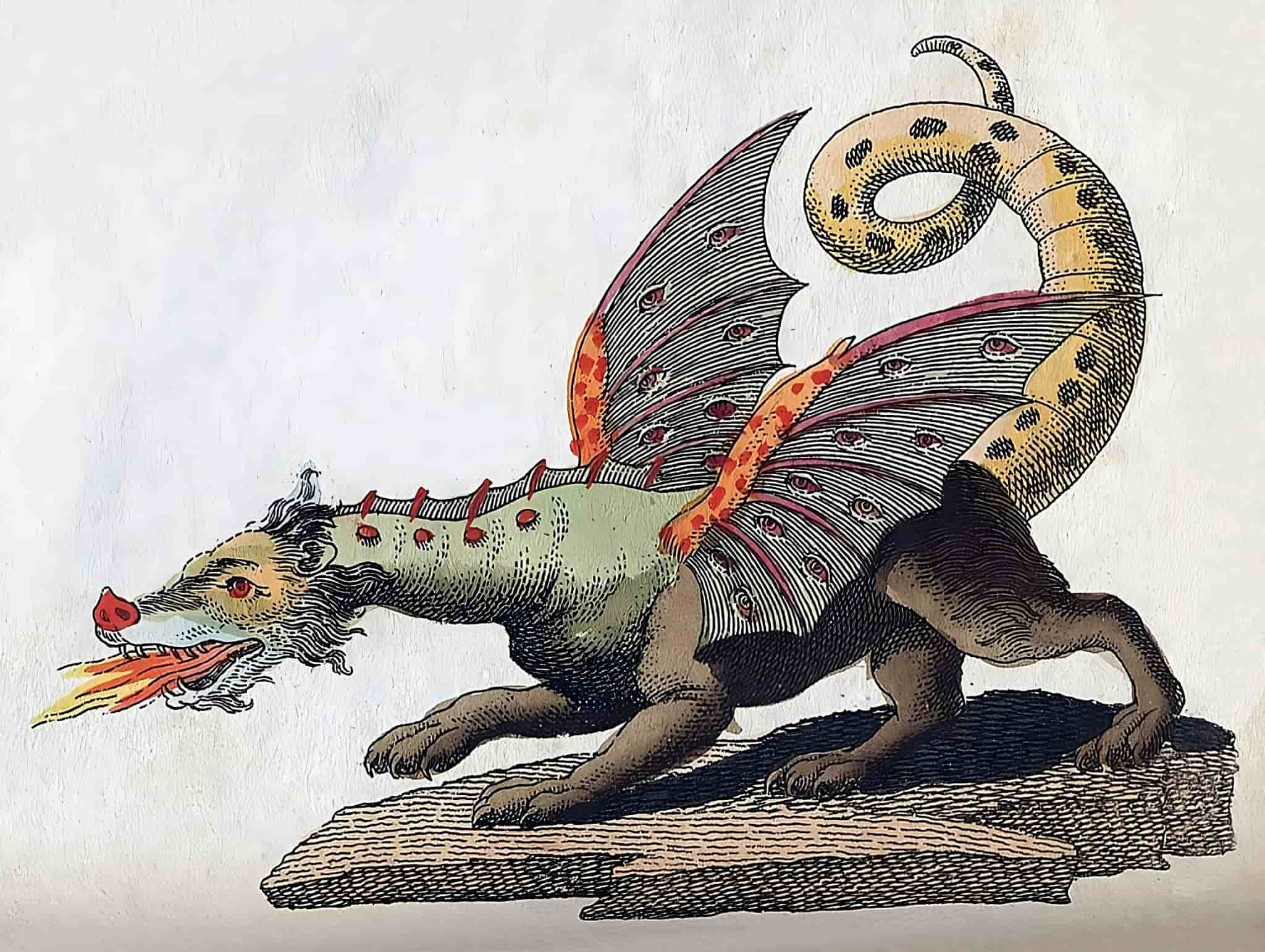
According to the documents from Dabeiba, short-tailed crocodiles often emerged from the water, attacking people and animals and dragging their prey into the mud to devour them. And even more frighteningly, there were said to be dragons living in the dark swamps.
Although the Spanish explorers did not see these swamp dragons with their own eyes, the native South Americans swore that there were monsters in the depths of the swamp. According to the documentary evidence left by the Spanish explorers, these monsters were likely giant alligators measuring several feet long or terrifying anacondas measuring tens of feet long, which were beyond human ability to withstand.
Dabeiba was such a legendary and terrifying place, and the dangers described above were just some of the rumors, whether true or mythical, passed down by explorers. In fact, even the natives were afraid of the gloomy and cold swamps, so they always carefully avoided the swamps and preferred to take winding and rugged mountain roads when traveling.
Vampire Bats
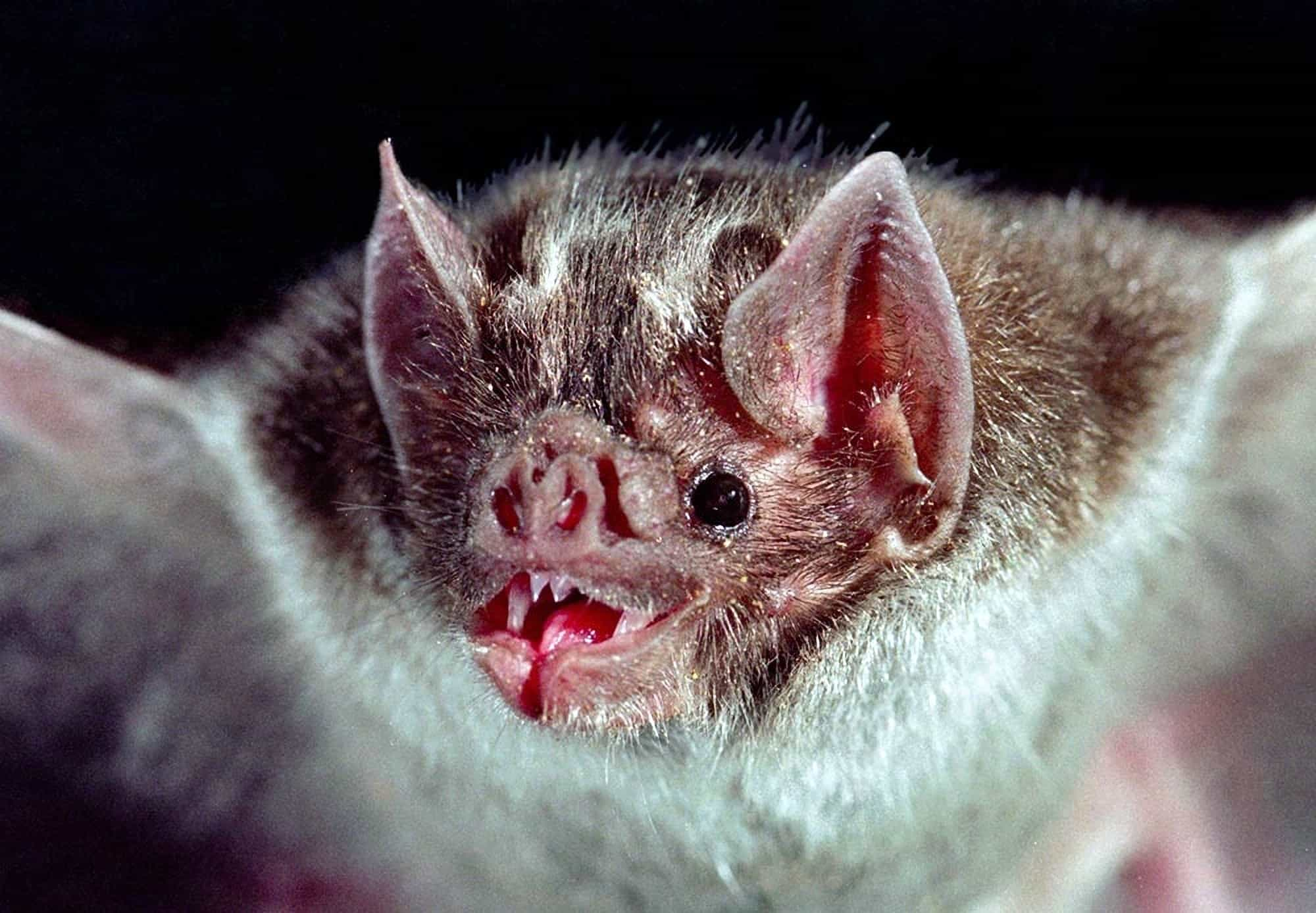
Spanish explorers in Dabeiba wrote that the area was full of wet marshlands with groups of reptiles, clouds of flies and mosquitoes, and large bats that, unlike bats in Europe, didn’t eat insects but instead fed on human blood like vampires.
Interestingly, many people thought the rumors of vampire bats were ancient fabrications, but modern zoologists tell us that they do indeed exist in the world. Vampire bats are a unique type of blood-sucking mammal that are found only in the central and southern Americas and feed on the blood of animals.
A vampire bat can consume up to 26 gallons (99 liters) of blood in its lifetime. There was even a recent series of vampire bat attacks in the Amazon region of Peru, causing great panic among local residents. Some people died of rabies after being bitten by vampire bats.
Harpy Monsters

In addition to these terrifying creatures of Dabeiba and the Antioquians, which may or may not be real, the chroniclers of the time also recorded a monster based on the memories of the explorers: the harpy. According to the local legend, shortly before the arrival of the Spanish, a huge storm occurred near Dabeiba, with such strong winds that even large trees were uprooted.
Under such a storm, the Antioquians’ houses were destroyed, and the forests became barren land. After the storm subsided, the terrified natives cautiously came out of hiding and began to prepare to rebuild their homes, but they discovered that the hurricane had blown in some “terrifying” creatures known as harpies.
In Native American folklore, there were two creatures that resembled the ancient Greek mythological creature, the harpy. They were described as having the face of a woman, eagle claws, and wings. They were enormous in size and capable of breaking tree branches while perched. These creatures would swoop down and carry people away, tearing them into pieces on the mountaintops.
For a time, the Native American towns and villages in the surrounding areas were terrorized by these creatures, but eventually, they were able to kill the larger ones and drive away the smaller ones, hanging the head of the creature on their spears to show other villagers that the danger had been eliminated. The head of the creature was said to resemble that of a woman.
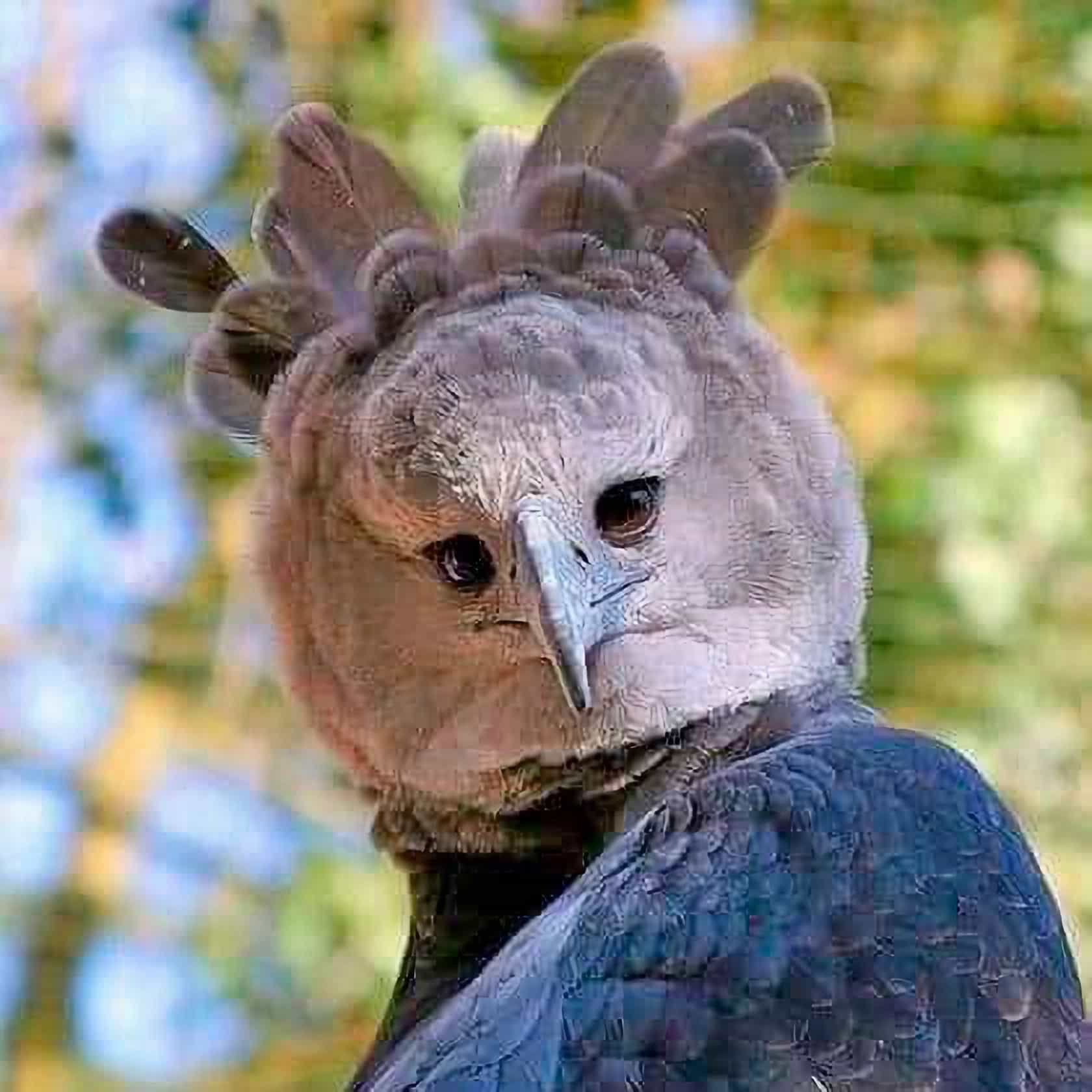
When the Spanish explorers heard of this legend, they found it hard to believe, but many Native Americans swore by its truth. It was later discovered that the creature they were referring to was actually a species of eagle found in certain areas of South and Central America, called the Harpy Eagle or “human-faced eagle.”
The Harpy Eagle is one of the largest and most powerful birds of prey in the world, with an adult body length of over 3.3 feet (1 meter) and a wingspan of up to 8.2 feet (2.5 meters). Its feathers are a mix of black, gray, and white, resembling a formal coat.
It eats snakes, monkeys, and sloths. It has the strongest grip of any bird and can carry prey that weighs more than 18 kg (40 lbs). Its appearance is quite different from other eagles, especially its face. Today, the Harpy Eagle is the national bird of Panama and is known for its formidable size and strength.
It usually perches on high places to survey the ground and branches, and when it spots prey, it swoops down to grab it. With its incredible strength, it can easily lift a small child, although capturing an adult requires much more effort.
Bibliography
- Martin Torodash. 1974. “Balboa Historiography.” Terrae Incognitae 6.1
- Francisco López de Gómara. Medina del Campo. 1553. Historia General de las Indias. Online Book.
- Kurt A Raaflaub.; Richard J. A. Talbert. 2009. Geography and Ethnography: Perceptions of the World in Pre-Modern Societies. John Wiley & Sons.




